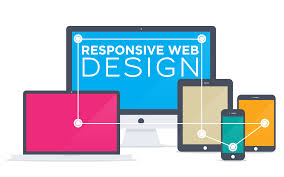Website Content
Encompasses all the information and applications available on your website. It’s is very surprising to know that the contents of a website may be same with respect to other with some minor font changes but the basic thing behind every website is to make it more available and user friendly to the users.
Why is this?
Content is the same because the intention of most websites is the same – to bring visitors on a journey towards an intended destination. They usually know nothing about the organisation. They are depending on you only for the information and history of the organisation before getting involved, e.g. to contact you about a funding opportunity, It is your job to make sure that the content you provide caters for all their information needs and leads them to decide in your favour.
For example, imagine a person interested in your charity comes to your website. She may have seen a reference to you in a magazine about some interesting work you are doing. Otherwise, she knows nothing about you. However, she liked what she read in the journal and has an interest in your discipline. If she feels you are competent and trustworthy, she would like to make a donation.
What is her online journey and how should you cater for it?
In this situation, the journey is simple:
Persuade her about the bona-fides of your organisation
Give her a basic introduction to the services & value you provide.
Compel her to act
Give her everything she needs to decide that you are a great organisation to support and make it easy to make a donation. Include a clear and explicit call-to-action that compels her to act, e.g. “Save a whale. Click here to donate now”.
Reassure her she is doing the right thing
Allow her to stay in touch with you online after (or even before) she has awarded the contract. For example, allow her to subscribe to a blog, an email newsletter, a Twitter feed or a Facebook page. Give her information that makes her feel she has done the right thing by trusting you.
These 3 steps of Persuade, Compel and Reassure occur again and again.
To create content, you need to understand how the journey is expressed for the subject matter of your website. You can then draw up an inventory of content features that support it.
This Content Inventory is simple a list of everything to be published on the website.
Warning! Do you have the time? Be careful when creating a big content inventory. Will you have the time and budget to create everything on it?
Experience shows very few web projects allow enough time for content to be authored to a reasonable standard. Much more time is usually allowed for design, which – although important – is merely a framework for displaying what people actually want, i.e. information and applications.
For example, a 500-word page of good web content can take up to 4.5 hours to create from scratch per page. If you have 100 pages of content, that equates to almost 3 months of full time activity.
Surprising, but true.
Of course, not every page takes 4.5 hours, but on average that is how long it takes.
As such, if you are planning to publish lots of new content – and if you want it to be of a high standard – allow plenty of time for it to be created.





4 Comments. Leave new
Well written…!
Excellent job!
really informative and well written thread of articles
i am going through you series , hhehe
very well described !
well written 🙂